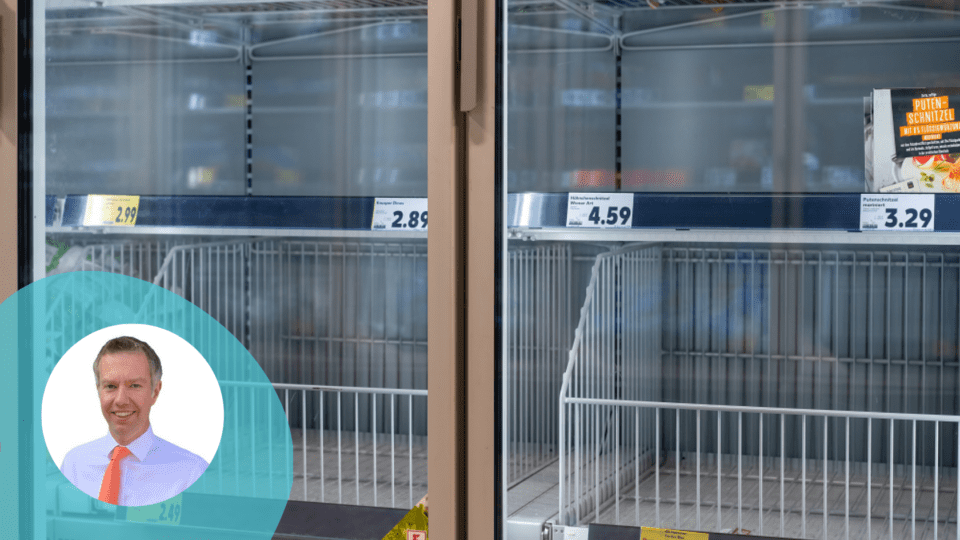The current supply chain crisis isn’t expected to get any better until early 2023, at best, prolonging the ongoing struggles retailers face with stockouts. Solving this may sound simple: either move available merchandise to the front of the shelf or offer substitutes — at the risk of alienating or even losing a loyal shopper. However, dealing with out-of-stocks amidst the current economic and logistics climate is more complex than merchandise facing and substitutions.
That’s because stores and suppliers are uncertain when they will be able to get a new order of any given item. What was previously a simple out-of-stock challenge has suddenly transformed into a shelf allocation problem that could end tomorrow — or next year. Finding the optimal balance between the two isn’t easy, but certainly possible. That requires retailers to have a full understanding of what’s on their shelves versus what’s on their planograms, how to optimize supply chains, and how to maximize the business impact of promotions.
Closing the Gap Between Planogram Expectations and Realities
Keeping up with a shelf’s assigned planogram is no easy feat. Stores with the most advanced shelf intelligence solutions — those that can scan real-time shelf images to get ‘realograms’ to compare against planograms — can substantially mitigate noncompliance, but many retailers have not yet embraced that technology.
Also widening this gap is a newer, though not as frequently cited, challenge for retailers: understanding which products are being purchased by individual shoppers versus what’s being picked by personal shoppers filling online orders.
That consideration is important because online grocery shoppers typically buy larger packages, which take up more shelf space. Retailers and CPGs that mistakenly stock too many larger packages on the shelf are likely misallocating valuable shelf space to stock products that only reflect a small portion of in-store shoppers’ actual needs. This issue is particularly acute, as shelf space for CPG products in larger stores is under pressure due to remodeling efforts to expand service departments and/or reallocate space for ecommerce fulfillment activities.
To close this gap, retailers need a more holistic view of their supply chains in order to enable them to manage an item’s full lifecycle, whether inbound to stores or outbound to distribution centers. Leveraging advanced integrated technologies, category managers and logistics teams should have the capacity to get real-time insights and move the merchandise in whichever direction is needed.
Making Lemonade from Lemons
Not every variance from the planogram is necessarily bad, though. The realogram may reveal opportunities to increase unit sales, category revenue and profits based on a specific store’s shopper preferences, or reveal insights on a newly introduced item. Innovative retailers embrace solutions that enable category managers to effectively reverse engineer the realogram into a planogram in order to adopt best practices from one store to other stores clustered with similar profiles. Category managers, marketers and store associates can also use this information to ensure that promoted items are optimally presented AND that they deliver the full potential of manufacturers’ available trade funds.
That stronger grasp on planograms can also be helpful for a growing trend in grocery: smaller-format stores. These types of stores have gained popularity as retailers seek expansion opportunities in densely populated areas and look to right-size their existing footprint to manage occupancy costs. Ultimately, the increased adoption of online shopping means fewer traditional new store openings as dark stores and direct-from-DC fulfillment models gain traction.
Another valuable part of this process is loyalty card programs, a treasure trove of data for retailers planning promotions. These programs let retailers view individual transactions and follow a customer’s sales history to understand which items shoppers purchase if their normal purchases aren’t available nor on promotion.
All of this creates a framework for more effective collaboration with CPGs to maximize sell-through. And at a time of fast-changing shopper preferences and increased allocation for new or seasonal items, category managers and CPGs can accurately measure speed to market for promoted items as well as valuable new product introductions (NPIs).
Be Ready no Matter What Lies Ahead
Waves of pandemic outbreaks, uncertain inventory availability, a stampede to online channels and a permanent shift to more long-term remote employment are driving a fundamental and rapid shift in shoppers’ item, channel and promotional preferences and behaviors.
All the above are reasons why grocers need to have a full view of stock insights. This will enable them to collaborate across the supply chain to restock or adjust accordingly to best comply with planograms and position themselves to both satisfy customers and achieve financial targets.
Julian Miller serves as Global Head, Retail Solutions Success, at SymphonyAI Retail CPG. Throughout his time in the industry, he has developed expertise in category management and has been responsible for the design and vision of highly innovative software solutions. Miller previously worked as a Development Manager at Aldata and as a Developer for Cosmic Solutions Ltd.




